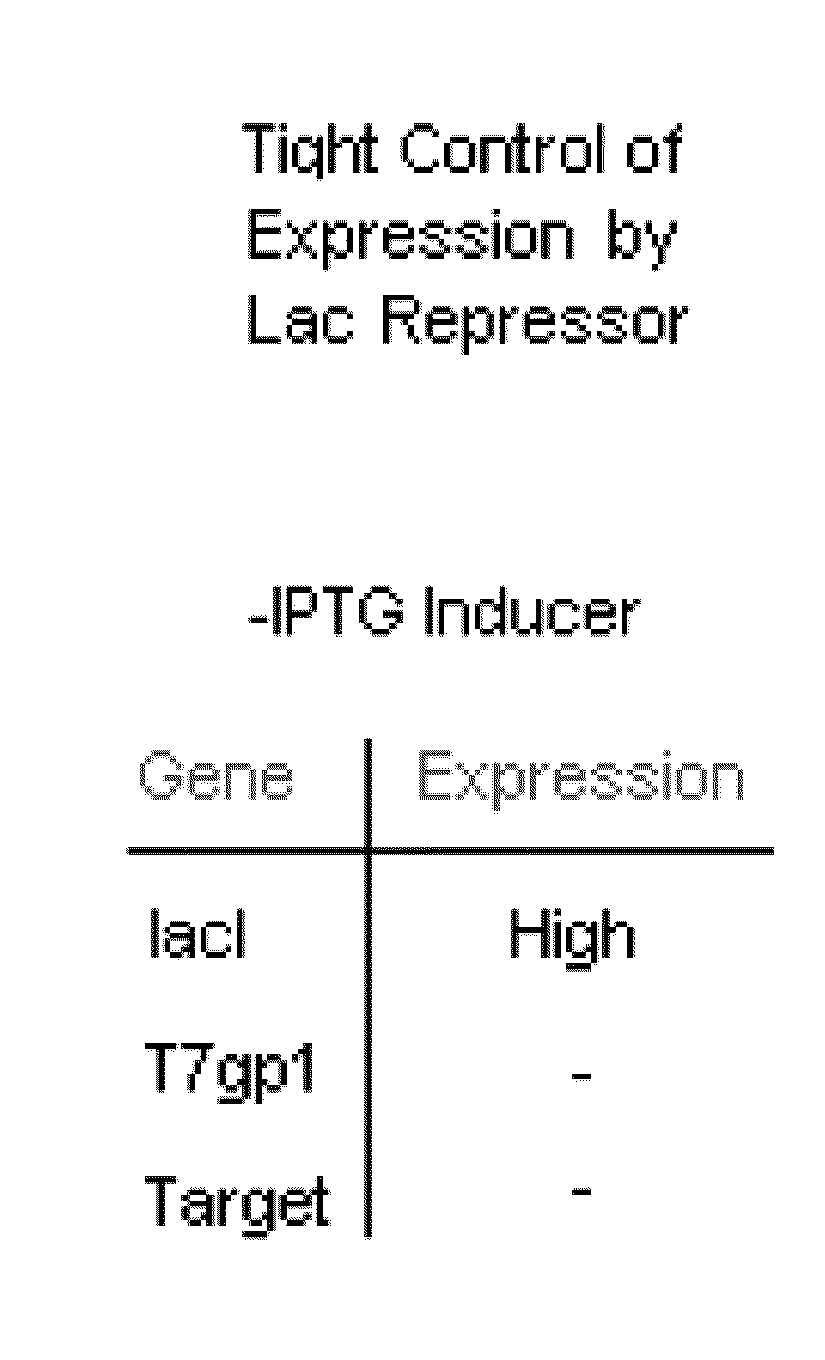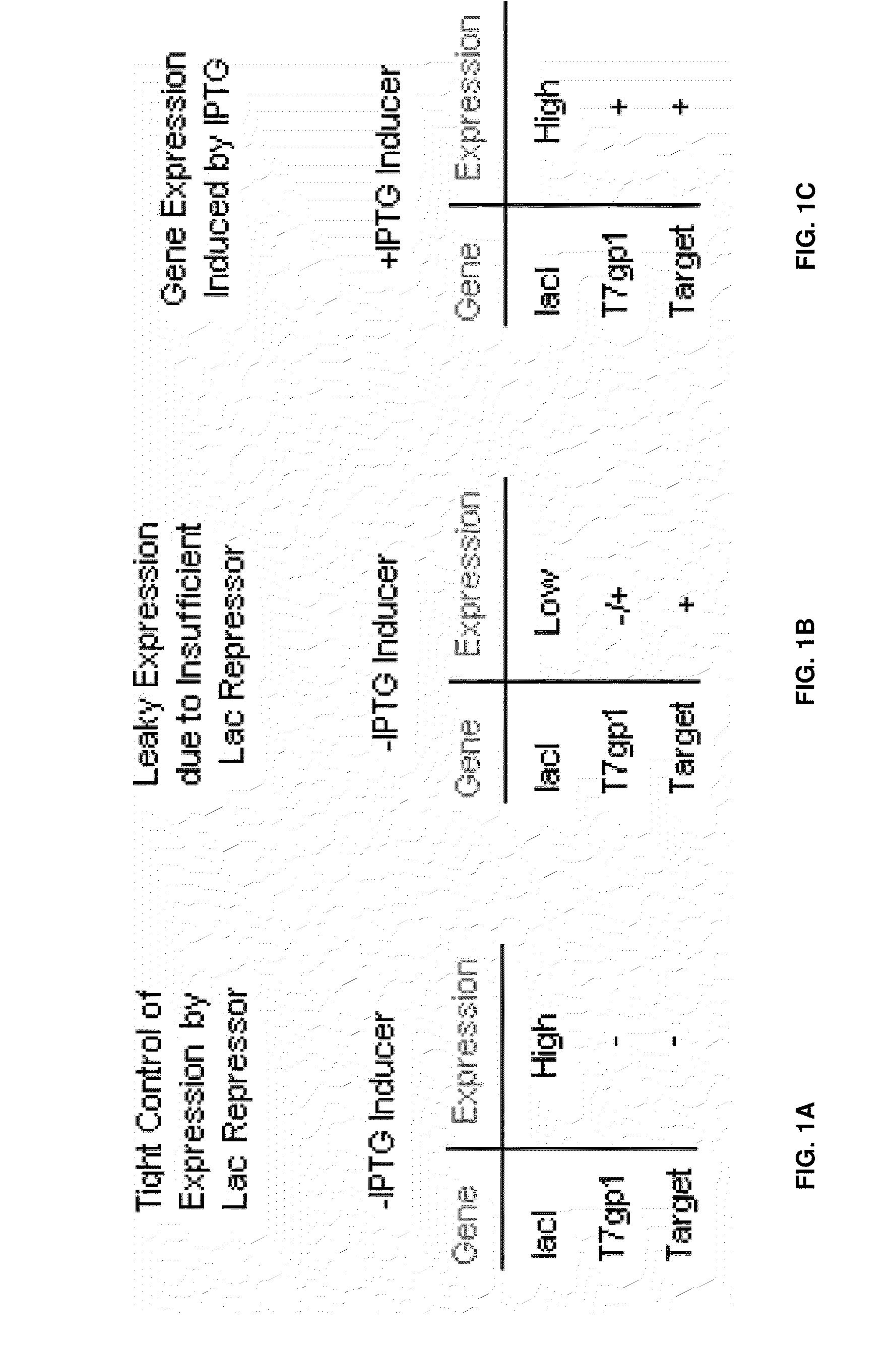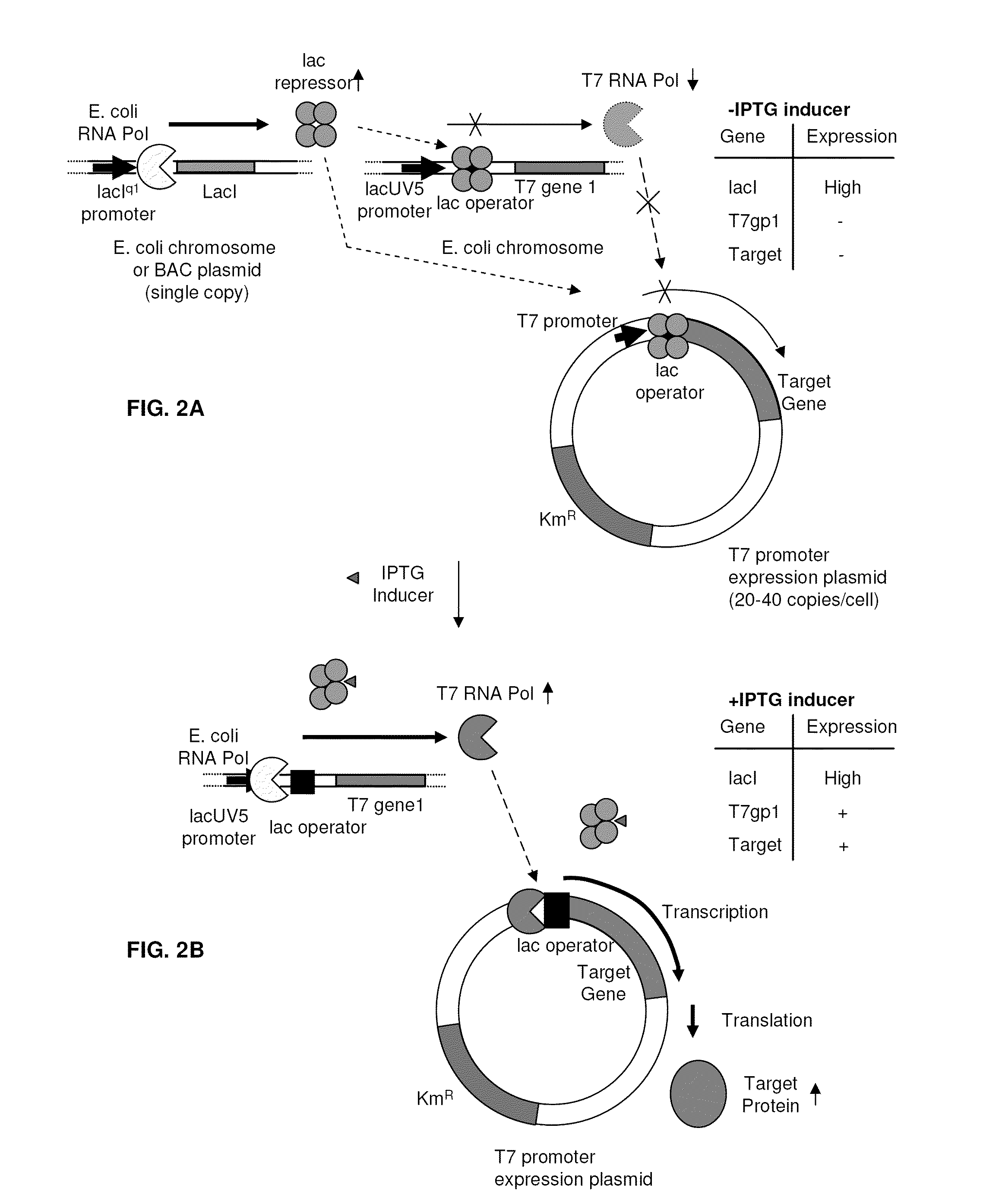Host-vector system for cloning and expressing genes
a technology of host vectors and genes, applied in the field of host vector systems, can solve the problems of unwelcome “leakage” expression of target genes, limited synthesis of plasmid-encoded gene products, etc., and achieve the effect of preventing background expression and sufficient protein production
- Summary
- Abstract
- Description
- Claims
- Application Information
AI Technical Summary
Benefits of technology
Problems solved by technology
Method used
Image
Examples
example 1
Construction of a New lacI Allele for High-Level Expression of lac Repressor Protein in E. coli
[0090]The chromosomal wild-type lacI gene is transcribed from a promoter characterized by a weak −35 element, and is normally expressed at an intracellular concentration of ˜10 nM, or 10 molecules / cell of tetrameric repressor protein. A mutant promoter allele, lacIql (Calos and Miller, 1981; Glascock and Weickert, 1998) contains a deletion of 15 DNA base pairs in the −35 region of the lac promoter. A consensus −35 element replaces the weak −35 element, resulting in 170-fold higher transcription than wild-type lacI, and 17-fold higher than the point mutant promoter, lacIq (Calos, 1978).
[0091]To achieve even higher levels of lac repressor protein, a novel allele of lacI was constructed that combines the strong (170-fold↑) lacIql promoter with two additional features that increase the efficiency of lacI mRNA translation. The first of these elements is a translational enhancer derived from th...
example 2
Tight Repression of Target Genes Cloned Under a T7-lac Promoter
[0093]A DNA polymerase gene was cloned under the control of the T7-lac promoter in the pET28a vector (Merck, Whitehouse Station, N.J.) and in the pETite vector (Lucigen, Madison, Wis.). The pET28a vector is a ˜5.4 kb plasmid having a lac operator adjacent to a T7 promoter and bearing a copy of lacI to provide for increased expression of lac repressor protein. The pETite vector is a ˜2.2 kb plasmid with a lac operator adjacent to a T7 promoter but with no lacI gene. The plasmids were transformed into BL21(DE3) cells not harboring lacIql+En or into BL21(DE3) cells harboring lacIql+En on a BAC plasmid. Transformants were selected on YT plates containing 30 μg / ml kanamycin. Transformants with the pETite vector could not be obtained in BL21(DE3) cells lacking the lacIql+En BAC plasmid but were readily obtained in BL21(DE3) cells containing the lacIql+En BAC plasmid. Single colonies of transformants were inoculated into LB+kan...
example 3
Expression of a Fluorescent Protein in BL21(DE3) Harboring lacIql+En Upon IPTG Induction
[0096]A gene encoding a yellow fluorescent protein was cloned under the control of a T7-lac promoter in the pET28a vector, which harbors a copy of lacI. The plasmid was transformed into four different T7 host strains and expression of the fluorescent protein after induction with IPTG was evaluated. The strains tested were BL21(DE3) with no additional lacI, BL21(DE3) harboring lacIql+En, NEB T7 Express (New England BioLabs, Ipswich, Mass.) harboring lacIq on a single copy mini F plasmid, and NEB T7 Express harboring both lacIq and lysY. The lysY gene encodes a variant form of T7 lysozyme, an inhibitor of T7 RNA polymerase (WO 2008 / 073746 to Samuelson et al. and Cheng et al., 1994). Transformants were inoculated into LB+kanamycin and grown at 37° C. until they reached an OD600 of 0.6-0.8. Samples of uninduced cells were harvested by centrifugation, and the remainder of the culture was induced by th...
PUM
 Login to View More
Login to View More Abstract
Description
Claims
Application Information
 Login to View More
Login to View More - R&D
- Intellectual Property
- Life Sciences
- Materials
- Tech Scout
- Unparalleled Data Quality
- Higher Quality Content
- 60% Fewer Hallucinations
Browse by: Latest US Patents, China's latest patents, Technical Efficacy Thesaurus, Application Domain, Technology Topic, Popular Technical Reports.
© 2025 PatSnap. All rights reserved.Legal|Privacy policy|Modern Slavery Act Transparency Statement|Sitemap|About US| Contact US: help@patsnap.com



